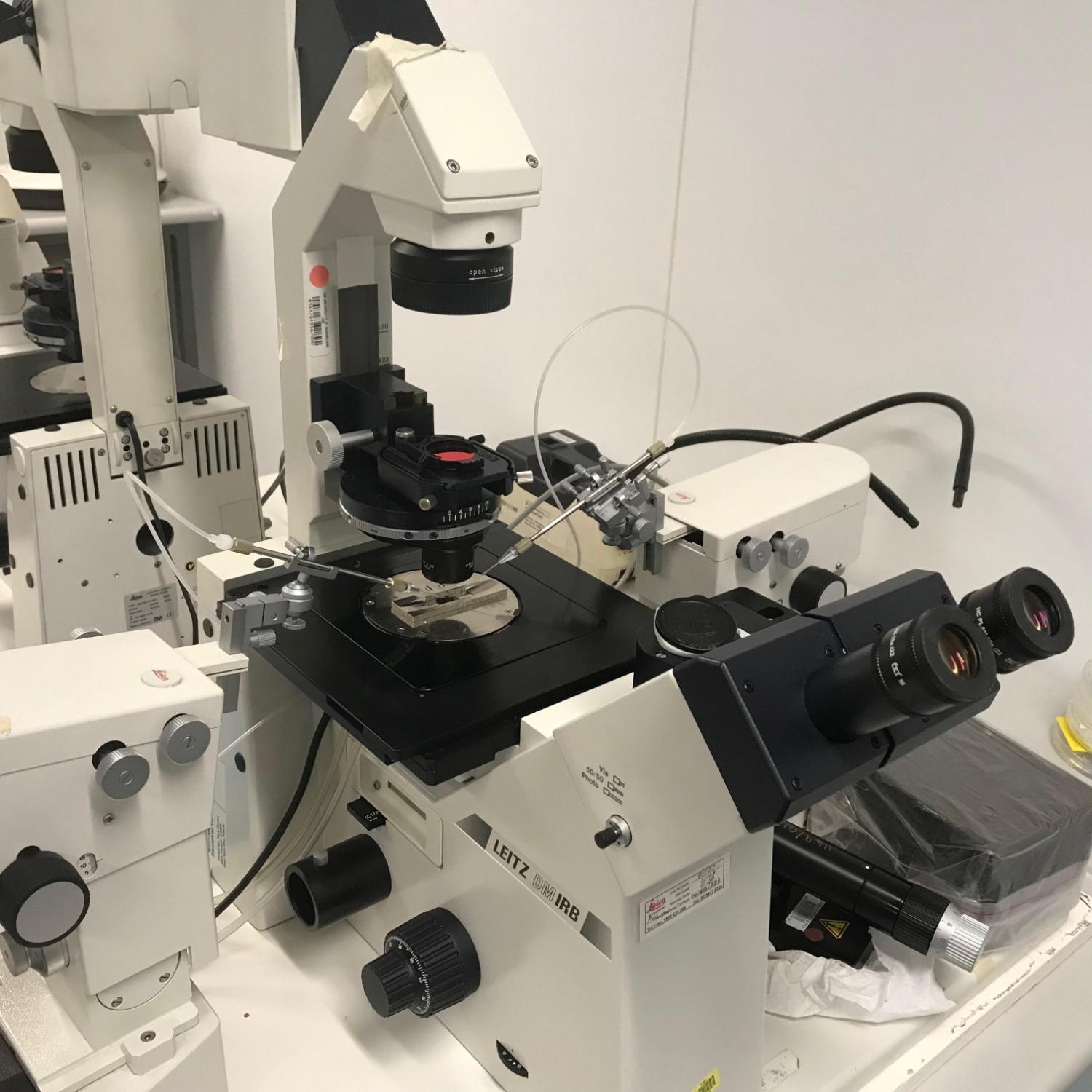Transgenic production
The injection of a DNA solution into the pronuclei of fertilized eggs is the most common method for making transgenic animals. Injection is done at the stage of development when the zygote has two pronuclei, one from each gamete, which will later fuse to form the diploid nucleus. Mice are particularly suitable for this procedure because it is easy to collect large numbers of fertilized eggs from a relatively small number of animals (around 8-10 females can produce up to 200 eggs). Also, the pronuclei of mouse eggs are easy to visualize using Differential Interference Contrast (DIC) optics.
The egg donors are super-ovulated; that is they are given two hormone injections, spaced 46-48 hours apart, to cause them to release more eggs than usual. They are then mated with fertile males and the eggs are harvested the next morning.
The construct DNA is then microinjected into the pronuclei of each egg. These eggs are cultured overnight to the 2-cell stage and then transferred to the oviducts of pseudopregnant foster mothers. (Pseudopregnant females are generated by mating females with vasectomized males so the females do not produce any fertilized embryos of their own.) The mouse gestation period is 19-21 days.
Once pups are born, tissue samples will be taken for screening at approximately 7 days. These tissue samples will be sent to the Client or to a genotyping servicing company of your choice. The offspring resulting from injected eggs may or may not carry the transgene. The mice that do carry the transgene are called founders.
Once founders are identified, the mice can either be sent to the Client for breeding or TASQ can breed the founders to produce F1 offspring (contact TASQ for conditions and charging).

